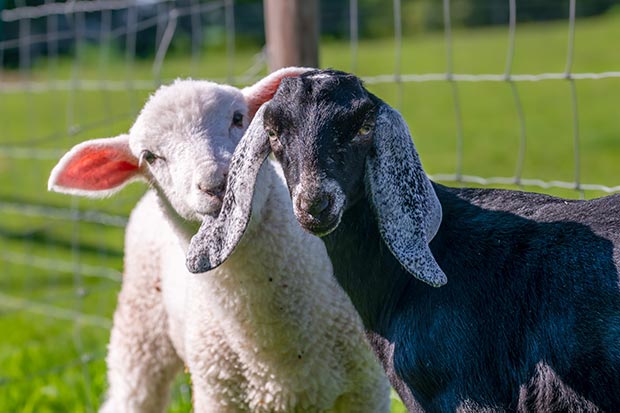
Remaining medically important antimicrobials transitioning to prescription status
The Food and Drug Administration is continuing to implement a plan to require veterinary oversight for all animal drugs that contain antimicrobials important in human medicine. The agency is doing so in an effort to guide judicious use of the products and preserve their effectiveness.
As part of the plan, the FDA is reminding stakeholders that certain over-the-counter antimicrobial products for animals are transitioning to prescription status, starting June 11.
“We believe that having a veterinarian involved is important and adds value and helps to make sure that we’re using these products as judiciously as we can,” said Dr. William T. Flynn, deputy director for science policy with the FDA Center for Veterinary Medicine.

Previously, the FDA worked with manufacturers of animal drugs to change OTC medically important antimicrobials used in the feed or drinking water of food-producing animals to be available only by veterinary feed directive or prescription, respectively, and to eliminate use of these products for production purposes such as growth promotion.
“This is a continuation,” Dr. Flynn said. “In other words, when we took steps back in 2017 to transition some drugs—medically important drugs—to VFD or prescription status, we were aware of the fact that there were some other products in the marketplace that were still over the counter that contained the same active ingredients—the same medically important antibiotics— but we chose to do this in a stepwise manner.”
The remaining 4% of OTC medically important antimicrobials used in animals—both food-producing and companion animals—are delivered in other dosage forms, such as injectables. These products will require a prescription from a veterinarian as of June 11. Examples include injectable penicillin and oxytetracycline.
Dr. Flynn said prescription-labeled versions of the impacted antimicrobial products will start to show up in distribution channels starting June 11. The Center for Veterinary Medicine does not intend to recall remaining OTC-labeled products. Products should be used according to the label while existing inventory depletes. The FDA has posted a list of animal drugs affected by the transition, including a few that have been withdrawn by the manufacturers.
“Our focus has been on trying to disseminate information to farmers and ranchers that are most likely to be relying on these products—products that they’re accessing directly from suppliers or farm supply,” Dr. Flynn said. The agency has been reaching out to smaller operations in more remote areas, for example, and operations that have small ruminants such as sheep or goats.
Dr. Flynn emphasized that farmers and ranchers still will have access to these transitioning products by prescription. Establishing a veterinarian-client-patient relationship will allow farmers and ranchers to keep these products on hand for sick animals, with sufficient instructions on how to use the products.
Dr. Michael Costin, an associate director in the AVMA Division of Animal and Public Health, stressed the importance for people who have been buying these products from a farm store to find a veterinarian and establish a VCPR sooner rather than later.
Dr. Costin added that veterinarians should be aware that people their practice hasn’t worked with before may come looking for veterinary services. Dr. Costin said: “These people may have backyard chickens, pigs, small ruminants, or even a couple of cattle. This is an opportunity for veterinarians to expand their services. It is also an opportunity for veterinarians to instruct on the proper use of antibiotics so they remain effective.”
Dr. Flynn said drug manufacturers are working through their distribution channels to make necessary adjustments. Some suppliers already have systems for handling prescription products, and other suppliers might choose not to take on the additional requirements.
The FDA is reaching out to veterinarians and organizations such as the AVMA to help spread the word about the changes coming up June 11. The AVMA has a webpage discussing the transition. The FDA provides answers to frequently asked questions for farmers and ranchers and a page with stakeholder resources on antimicrobial stewardship in animals.
The stakeholder resources feature a section on veterinary oversight relating to the transition. The section offers the following materials in PDF format: a poster on antimicrobial stewardship (Spanish version), a brochure on antimicrobial stewardship in veterinary medicine (Spanish version), and fact sheets on transitioning products in beef and dairy cattle (Spanish version), in poultry (Spanish version), and in sheep and goats (Spanish version).

A version of this article appears in the April 2023 print issue of JAVMA.